When we think of desert plants, we imagine dry, lifeless-looking vegetation.
Although the climate in deserts has hot temperatures, dry winds, and low rainfall, plants grow in plenty.

Vegetation that grows in deserts is mainly cactus, succulents, shrubs, trees, grass, and wildflowers.
These plants rely on the water they retain in their fleshy leaves for desert survival. They also have deep growing roots that seek water below the earth’s surface.
How can plants survive the desert?
Desert vegetation, similar to wild animals, has an adaptation to its surroundings.
Their physical characteristics and behavior enable them to withstand the arid climate.
Their leaves and stems are stiff and thick to store water while resisting scorching temperatures.
Which desert plants are best to grow?
If you live in a primarily dry area, there are various desert plants you can plant.
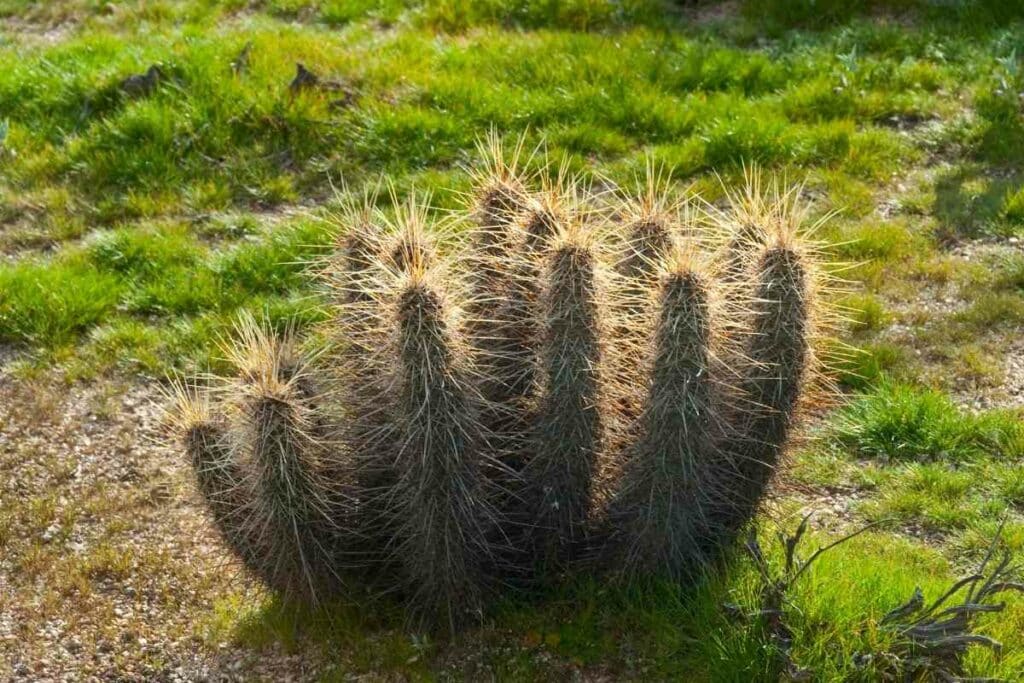
A plant should have a few characteristics to withstand the climate in deserts.
They include:
- Thrive under eight or more daily hours of direct sunlight
- Require minimal watering. Most desert plants can last weeks without water
- Grow in dry gravel or sandy soil
- Ability to withstand the cold nighttime temperatures
Here is a detailed description of some of the typical desert plants.
Read on to discover the succulents, cacti, shrubs, trees, grass, and wildflowers you can grow.
List of 19 Desert Plants with images and How to grow them
Cactus and Succulents
1. Beavertail Cactus
Scientifically known as Opuntia basilaris, this cactus grows short and spreads.
It has short, thick stems that grow to about 11 inches high and over 5 feet wide.
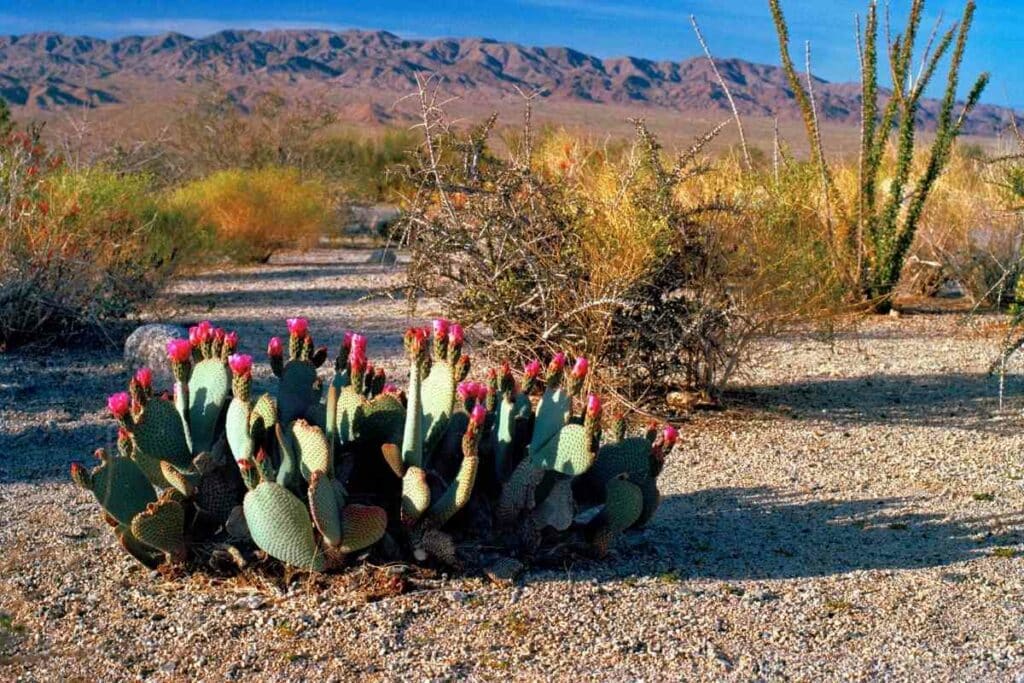
The way the grey-green stems are joined together resembles a beaver’s tail hence the name.
Beavertail cactus natively grows in the Mojave and Sonoran deserts in parts of:
- California
- Nevada
- Arizona
- and Utah
They tend to grow on dry, rocky surfaces along hill slopes.
Lavender-colored flowers bloom from the tip of the stem clumps from March to June.
A grayish brown, oval-shaped inedible fruit later follows. It contains hundreds of seeds that one can use to grow new beavertail cacti.
You can grow Beavertail cactus in containers or outdoors on a rocky patch. Propagate a new plant by cutting off a stem and plant it once it develops a callus.
Ensure it receives full sunlight and the soil is quick-draining, either sand or mixed with gravel.
What to Expect? It requires minimal care as you only need to water it once in 3 weeks. If you’re growing it outdoors, bring it indoors during winter. Otherwise, do not water it.
2. Soaptree Yucca
This cactus resembles a palm tree. It has a light grey trunk that grows to about 18 feet tall.
The long green-yellow leaves have white lines and sharp tips. The roots and trunk have a soapy substance that is sometimes used to make a soap substitute.
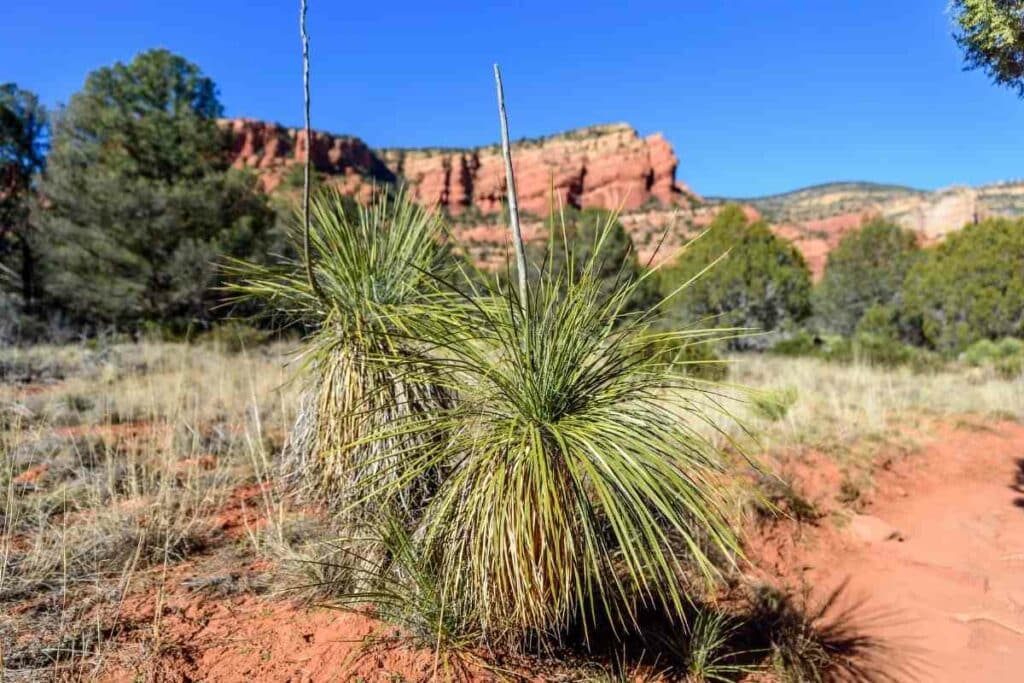
Soaptree Yucca is common in:
- mid-Arizona
- New Mexico
- and western parts of Texas
It grows in sandy soil in dry grasslands and deserts.
The flowers are bell-shaped in white clusters. They grow out of a long stalk that crops up during spring. It then produces a thin brown fruit in summer with tiny black seeds.
To grow Soaptree Yucca, plant it in well-draining sandy or loamy soil. They require a lot of sunlight but can withstand cold temperatures.
It does not require much water or maintenance, so water it sparingly. Use the seeds it produces to grow new plants.
3. Century Plant
Century plants are sisal-like vegetation.
They are characterized by the thin stalk that emerges from them, approximately 25 feet tall.
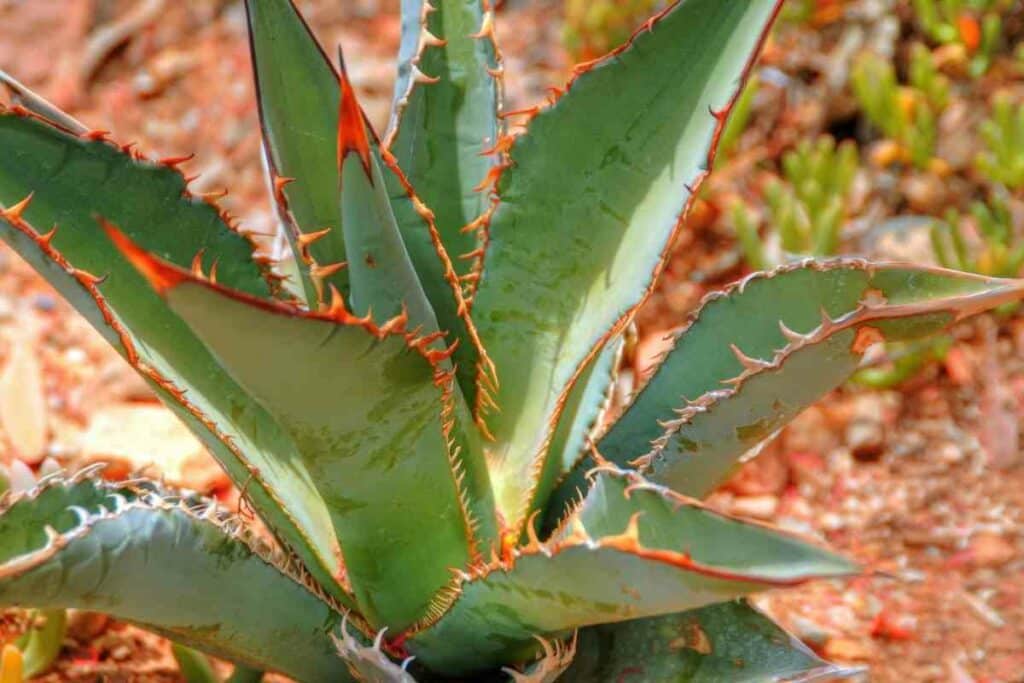
The base leaves of the plant are wide, long, spiked around the edges, and greyish-green in color.
Century plants grow in:
- southern California
- parts of Mexico
- and Texas
It thrives in dry slopes and rocky areas.
The plant takes several years before it begins to flower. The flowers appear at the end of the stalk in yellow horizontal clusters around June to August.
To grow a Century plant, place it where it gets full sunlight for about eight hours daily.
However, it can withstand a little shade. Plant it in well-draining soil and water deeply once every month.
Transplant the offshoots that sprout to grow new plants. Extreme cold temperatures can damage the plant, so avoid exposing it to frost.
4. Saguaro Cactus
This cactus has tall, thick green stems with large arms facing upwards.
The skin on this plant is even with wavy lines.
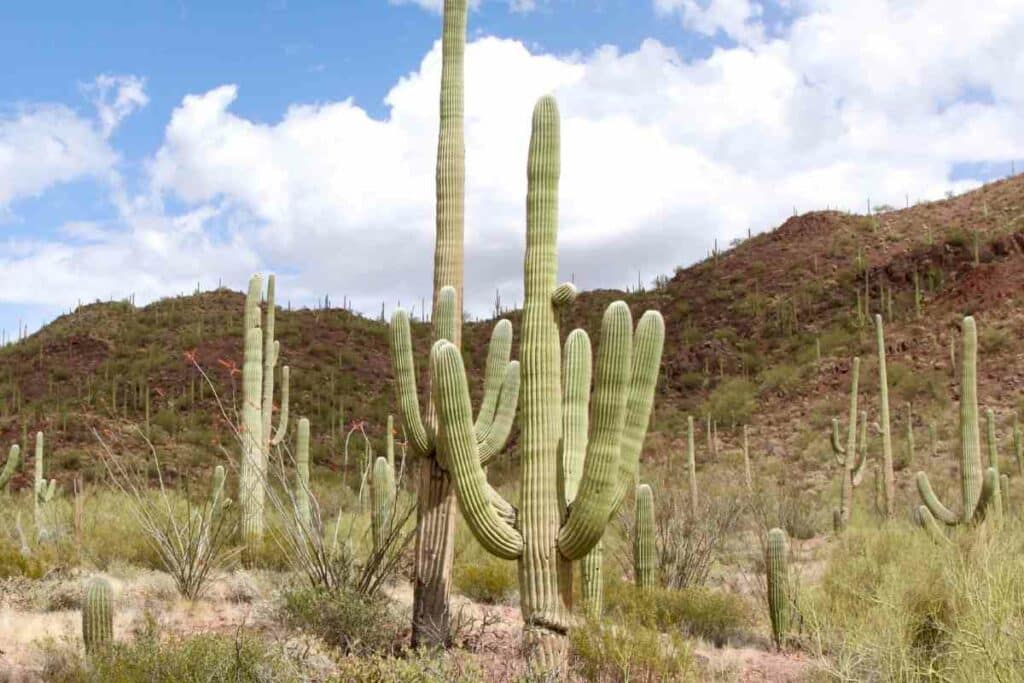
When the plant receives water, the trunks and limbs thicken, increasing in size. At maturity, the Saguaro cactus can get as tall as almost 50 feet.
You will find the Saguaro cactus in dry parts of:
- California
- Mexico
- and Arizona
Although the desert plant is massive, the root system is shallow but wraps around rocks to withstand strong winds.
It produces white flowers that have a yellow center around May to June. In Arizona, the Saguaro Cactus flower is the state flower.
Works Well – Grow the Saguaro cactus under full sunlight with little attention. The soil should be well draining and gravelly. Water them twice a month when young to encourage growth.
This plant produces some green fruits with deep red fleshy insides that emerge at the beginning of Fall. The Saguaro cactus has the most seeds in the cacti family.
5. Hedgehog Cactus
The Hedgehog cactus grows in round clusters of green stems.
It is also referred to as the Mojave Mound or Kingcup cactus.
It produces bright red flowers that have a cup shape. The green sphere-shaped and spiky stems give it a hedgehog appearance.

The flowers of the Hedgehog cactus stay open at night, unlike other cacti flowers. However, they last only about five days.
This succulent thrives in parts of California and North America. The thick flesh absorbs water while the spikes provide shade to prevent moisture loss.
Hedgehog cacti prefer direct sunlight and proper draining soil. During winter, grow the plant indoors, away from frost.
The spines are soft and fall off regularly. Provide minimal water once the earth is parched. The fleshy, juicy fruit they produce is edible for birds and wild animals.
6. Fishhook Cactus
Fishhook cactus grows under desert shrubs and bushes.
It is long and cylinder-shaped with small clusters of green stems.

At maturity, the cactus can grow up to above 5 inches tall. The flowers grow on the tip in bright colors.
Fishhook cactus is native to desert parts of New Mexico, Texas, Arizona, and California.
To Grow It – Provide well-draining soil and direct sunlight with little shade.
This is best planted at the onset of spring and requires water on scorching days. Do not water it during winter or add fertilizers.
7. Senita Cactus
This plant is mainly found in the rocky hillsides of the Sonoran desert.
It has long organ-pipe-like stems that have spikes at the tips.
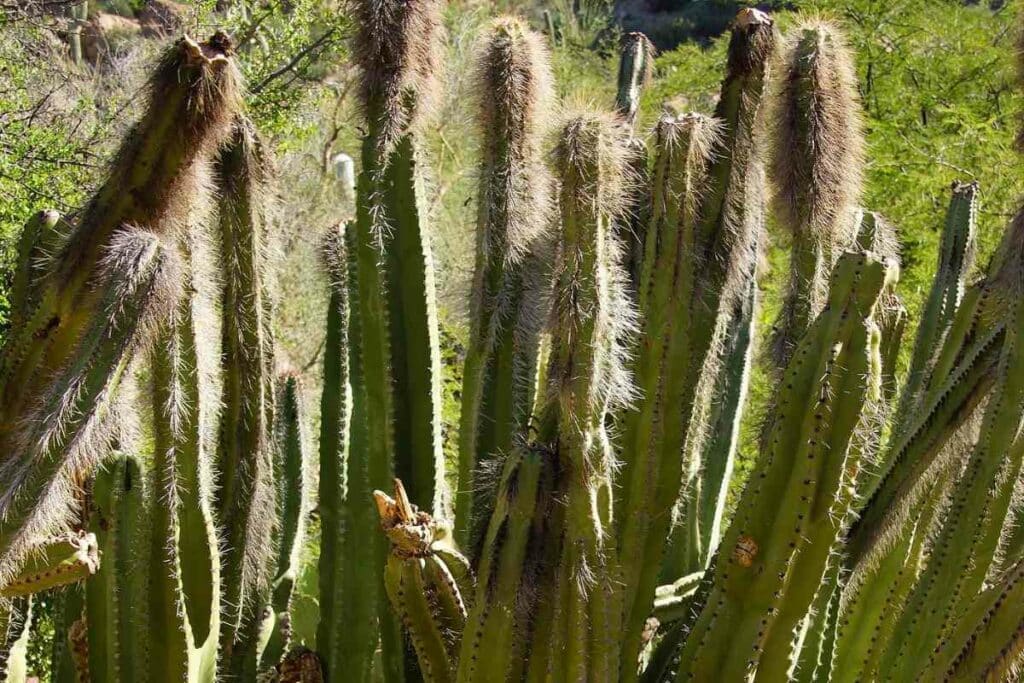
The pale red and pink flowers appear at the ends. Moths that live on the cactus pollinate the flowers to produce a red edible fleshy fruit.
Senita cactus is simple to grow and maintain. It is a highly drought-resistant plant that can rely on rainfall.
It enjoys direct sunlight and dry, rocky soil. They can grow tall, up to 15 feet high so leave room for the growth.
Trees, Grass, and Shrubs
8. California Fan Palm
Scientifically referred to as Washingtonia filifera, it’s mainly found in the Mojave and Sonoran deserts.
The tall tree prefers moist soil and has a tall trunk covered with dry leaves.
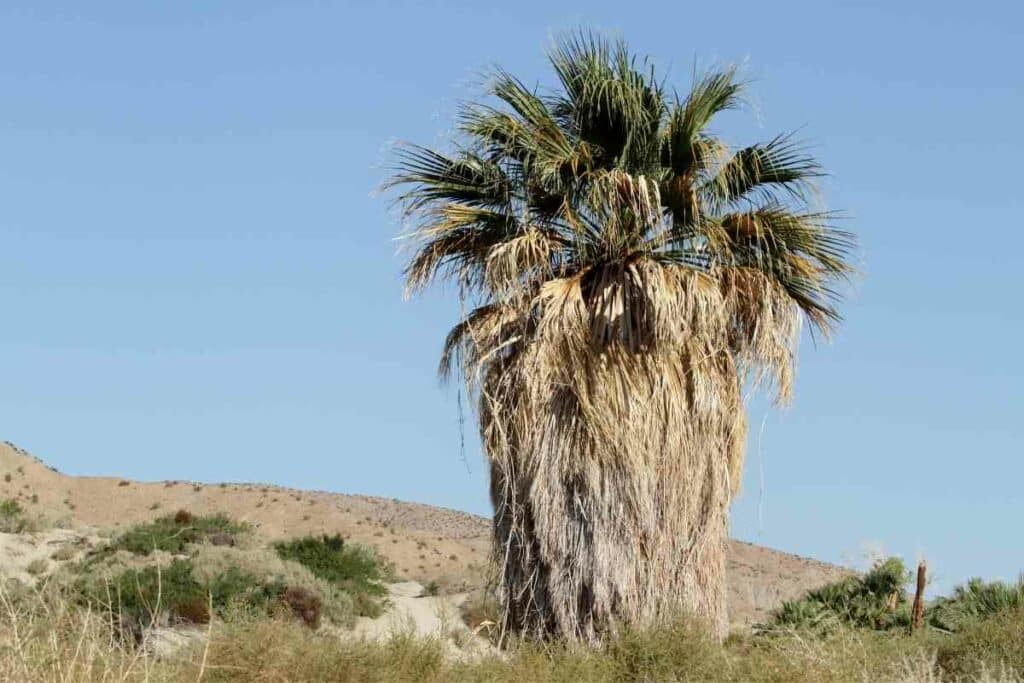
The evergreen fan-shaped leaves are at the top of the trunk, growing over 20 feet tall.
California Fan palms produce long funnel-like white flowers and dark fruits with a sweet pulp. Wild animals and birds feed on the seeds, aiding in rapid growth.
Key Takeaway – Plant the palm tree outdoors under direct sunlight in well-draining soil. It requires no maintenance and little water as it is a drought-resistant plant.
9. Mesquite Tree
The Mesquite Tree thrives in deserts and produces beans edible by livestock.
There are three mesquite tree species:
- screw bean
- honey
- and velvet
They all share similar characteristics and physical appearance. Mature trees grow above 10 feet tall and have branches with thorns.

They shed their leaves in winter, and flowers bloom in spring and summer. The color of the flowers ranges from green to yellow before producing the seed pods.
Growing Mesquite trees is relatively simple as they do not require much attention.
Simply germinate them from the seeds in a hot climate area with well-draining soil. Ensure the seedlings receive a lot of sunlight.
10. Whitethorn Acacia
The Whitethorn Acacia is a broad branch shrub that grows in southern Arizona, New Mexico, and parts of Texas.
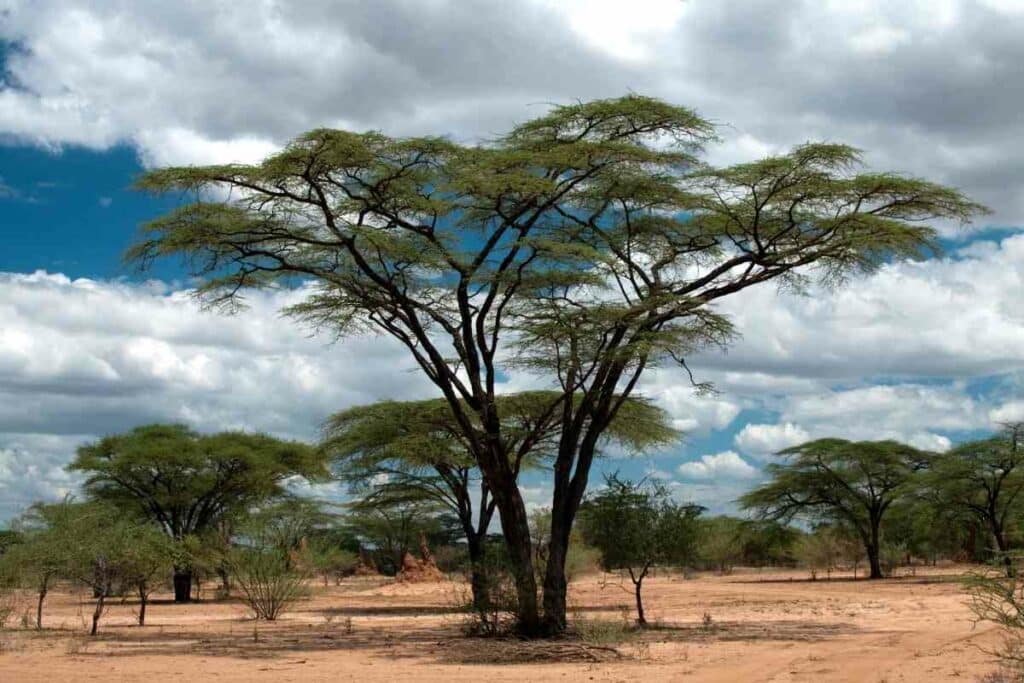
It grows up to 15 ft and has numerous branches. Its leaves are green and tiny that shed in cold weather or during extreme drought.
Flowers look like yellow puff balls with a sweet fragrance at night, while the seed pods are long, thin, and red-brown.
Plant the seeds in soil that does not retain moisture to grow a new plant. Ensure there is direct sunlight. A thornless variety is available for a home garden.
11. Joshua Tree
The Joshua tree is in the Yucca family and grows in the Mojave Desert.
Standing tallest at over 15 feet, it has clusters of evergreen spike leaves.
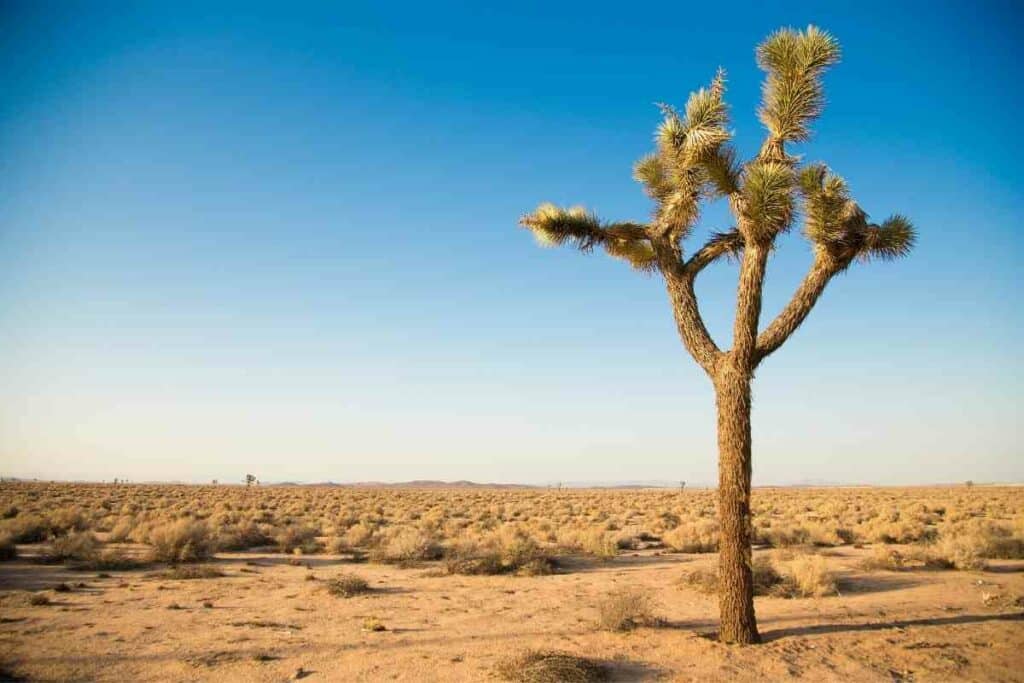
It produces cream-white and yellow-green flowers every spring with a sour smell. The green and brown fruit contains seeds that fall off in spring when dry.
Grow Joshua tree from seeds or young seedlings available in gardens. They require sandy soil and direct sunlight to thrive.
It’s best to plant the roots during the cooler seasons and water once a month. Also, ensure it grows in a desert-like climate; otherwise, it will not survive.
12. Desert Lavender
The Desert Lavender is a perennial shrub that grows in Sonora and Baja, California.
It is pale green with clusters of sweet-smelling violet flowers in spring.

The leaves are evergreen and thick, with a soft hair cover and sharp edges. The shrub grows to around 10 feet tall.
Grow them in entryways to act as screens. They require a lot of sunlight so plant them in desert landscapes.
Keep In Mind – Their flowers attract bees and insects, so leave them in an open space. Water them deeply during summer and allow the soil to completely dry. Extreme drought will, however, dry out the leaves.
13. Creosote Bush
Creosote Larrea tridentata thrives in the Southwestern deserts of Utah, Arizona, California, Texas, and Mexico.
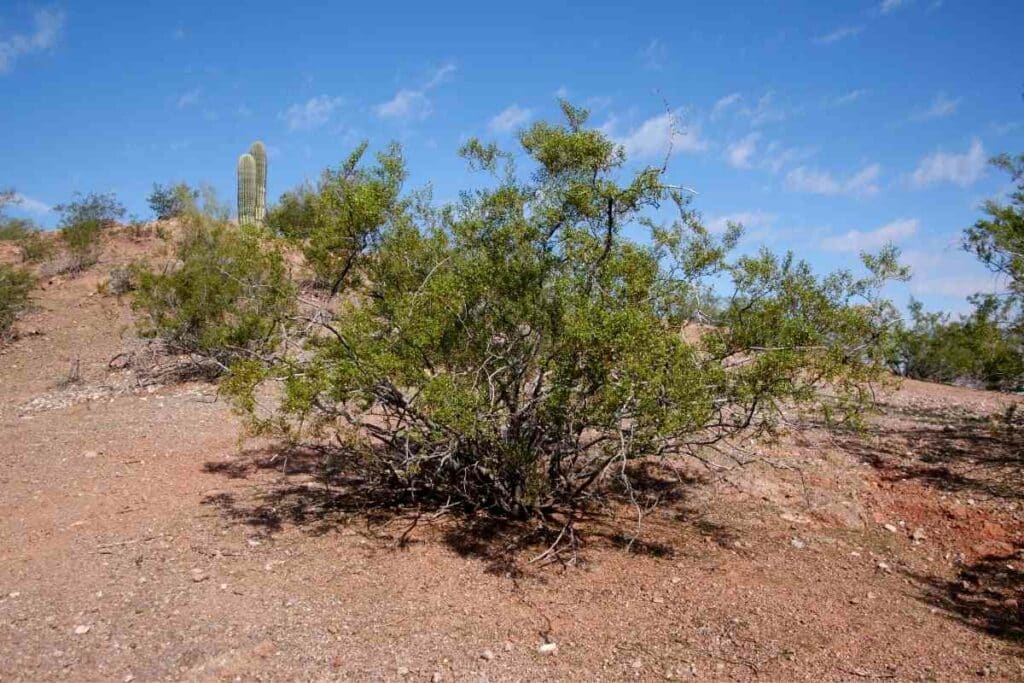
The large shrub has numerous soft stems that grow out of the base. It has pointy yellowish-green leaves that are thick to store water.
During rainy seasons, the leaves produce a strong smell that repels insects.
Yellow flowers bloom around February to early August and remain on the trees most of the year. A hairy white-red fruit pod then emerges that has five large seeds inside.
To grow a Creosote bush, soak the fruit pod in hot water to soften the hard skin. Then, remove the seeds and plant in well-draining moist soil till they germinate.
Wildflowers
14. Ghost Flower
The Ghost flower grows in desert parts of Arizona, Nevada, and California.
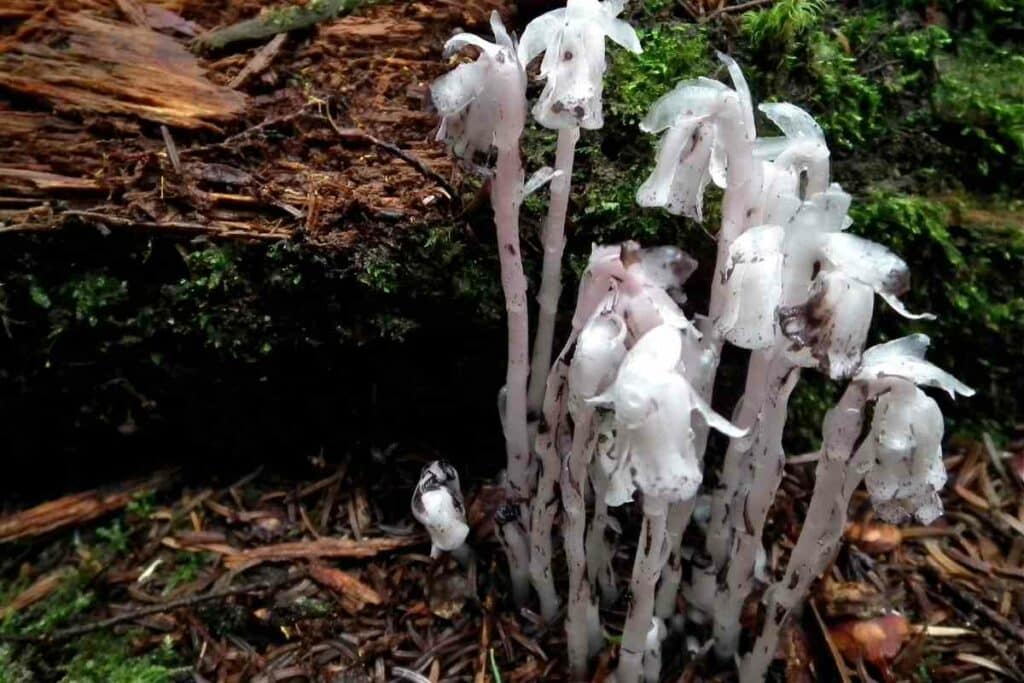
It is an annual desert flower than matures at 10 inches tall or more. The 4-inch-long thin leaves are a hairy and pale green.
It produces flowers that are an almost translucent pale cream; thus, the name ghost flower.
To grow Ghost flowers, pot them using sandy soil under direct sunlight. Since it does not require much watering, maintenance is easy.
15. Desert Marigold
This is a short perennial with thin, long stems and hairy leaves.

It grows to over 10 inches tall, and each stem flowers a single yellow bloom. At the center of the flower are pale brown seeds that birds love to eat.
To grow Desert Marigold, plant the seeds in a sunny spot where the soil is sandy or rocky.
However, they grow in almost all soil types, as long as you do not overwater them. Their bright wildflowers spring from March until November.
16. Yellow Nightshade
The Yellow Nightshade wildflowers thrive in the western North America region.

The leaves are long, thick, and oval-shaped with blunt edges. Additionally, they have soft hair covering to prevent moisture loss.
Yellow Nightshade flowers have a bell shape and are bright yellow. Once mature, they produce a long fruit berry that looks like a lantern.
From Experience – It’s best to plant the wildflower in shallow, well-draining soil in a sunny spot. They are sometimes annual or perennial plants requiring little care and maintenance.
17. Desert Willow
The Desert Willow is native to California. The shrub has broad leaves that look like an actual willow plant.

The lipped flower it produces is dark to light purple with a hairy feel. The wavy petals have yellow lines in the middle towards the center of the flower.
A mature plant grows to about 18 feet tall.
To grow Desert Willows, plant them on rocky slopes and water once a month. It loves a dry climate but tolerates rainfall once it matures.
18. Brittlebush
Brittlebush is a desert plant with long stems and leaf clusters on the stem tips.

It is a dry coastal shrub that grows on rocky or gravel surfaces. The leaves have grey hairs and a smooth bark on the stems.
Brittlebush produces purple, orange, and yellow hue daisy-like flowers from March to May.
Plant young seedlings in warm moist soil till they grow. Once the plant grows to its full size, water it only when the soil is dry.
19. Desert Lily
The Desert Lily grows in the Mojave and Sonoran deserts.
The bulb is 4 feet tall and has long blue-green leaves with wavy edges.
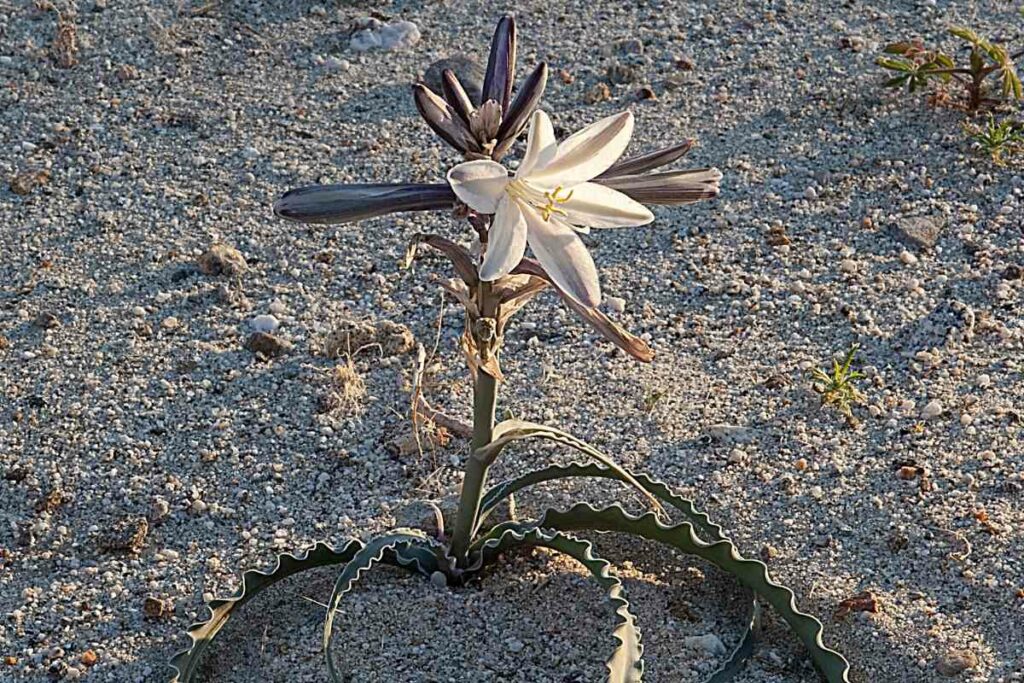
It produces foot-long clusters of sweet-smelling cream flowers that have six petals with a silver shine.
It does well in an arid area with deep sandy or loam soil for proper drainage.
The flower bulb only emerges if the weather conditions are favorable. Ensure it gets lots of direct sunlight most of the year.
Conclusion
Desert plants are hardy vegetation that best grows in arid areas.
The succulents and wildflower variety are best as ornaments. Most people grow them indoors in pots as decor.
However, the shrub and tall tree variety, especially cacti, are suitable for outdoor plants and landscaping.


